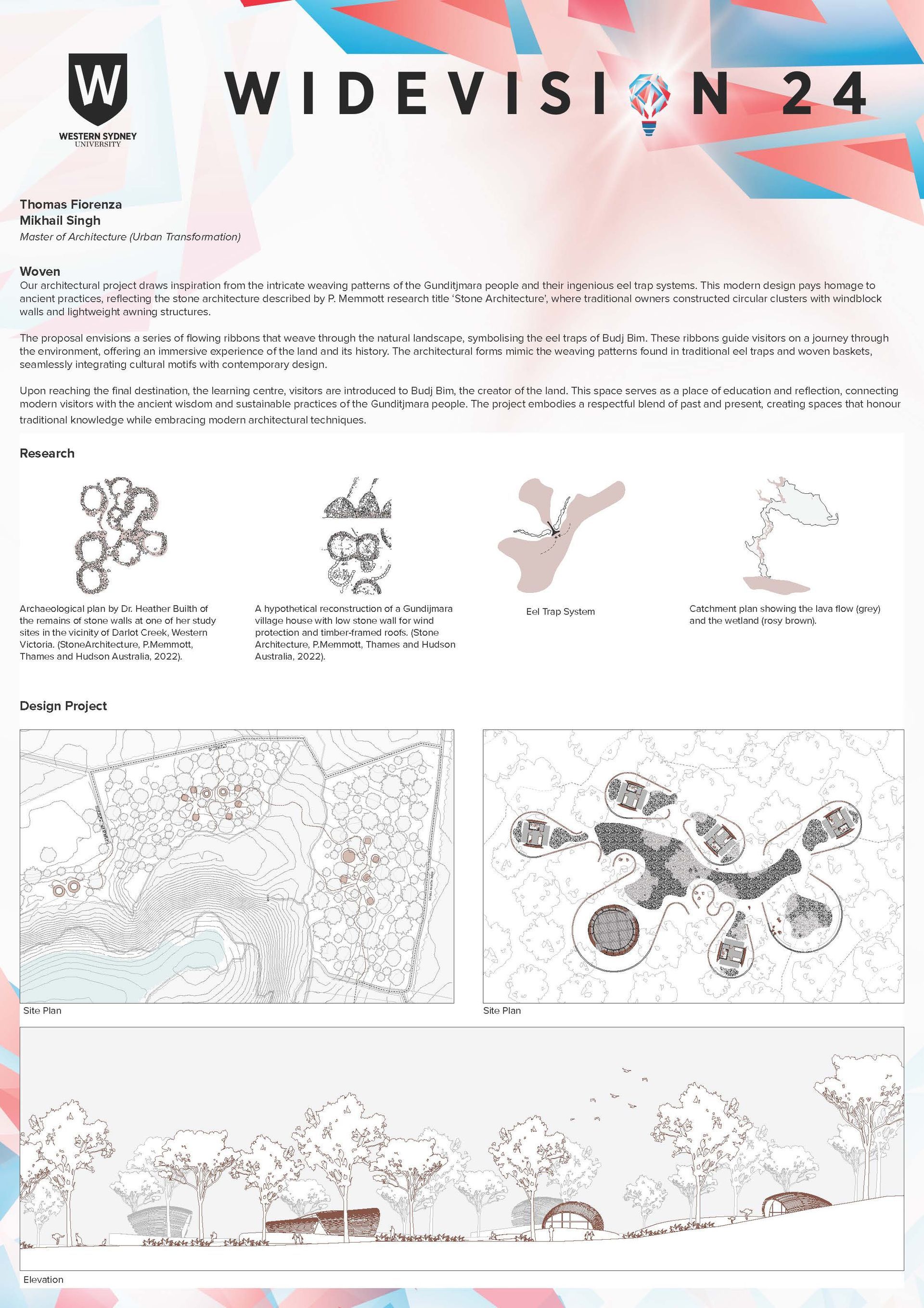Thomas Fiorenza
Weave
PROJECT
Our architectural project draws inspiration from the intricate weaving patterns of the Gunditjmara people and their ingenious eel trap systems. This modern design pays homage to ancient practices, reflecting the stone architecture described in P. Memmott's research titled Stone Architecture, where traditional owners constructed circular clusters with wind block walls and lightweight awning structures.
The proposal envisions a series of flowing ribbons that weave through the natural landscape, symbolising the eel traps of Budj Bim. These ribbons guide visitors on a journey through the environment, offering an immersive experience of the land and its history. The architectural forms mimic the weaving patterns found in traditional eel traps and woven baskets, seamlessly integrating cultural motifs with contemporary design.
Computational design played a key role in translating the intricate weaving patterns into the facade. Using advanced parametric tools, we created an organic, flowing structure that mirrors the complexity of the eel traps. This approach allowed for precise modulation of the facade's undulating forms, enhancing its connection to the natural landscape while respecting traditional craftsmanship.
Upon reaching the final destination, the learning centre, visitors are introduced to Budj Bim, the creator of the land. This space serves as a place of education and reflection, connecting modern visitors with the ancient wisdom and sustainable practices of the Gunditjmara people. The project embodies a respectful blend of past and present, creating spaces that honour traditional knowledge while embracing modern architectural techniques.

With respect for Aboriginal cultural protocol and out of recognition that its campuses occupy their traditional lands, Western Sydney University acknowledges the Darug, Eora, Dharawal (also referred to as Tharawal) and Wiradjuri peoples and thanks them for their support of its work in their lands in Greater Western Sydney and beyond.
Acknowledgement of Country
Western Sydney University Copyright © 2004-2024 | ABN 53 014 069 881 | CRICOS Provider No: 00917K | TEQSA Provider ID: PRV12061 (Australian University)

